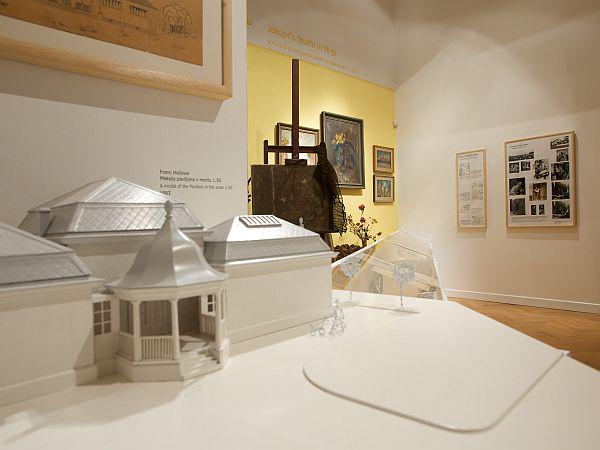

Ljubljana’s Tivoli Park serves as the city’s green heart and is a perennially popular recreation area for residents of Slovenia’s capital. For years, it was also the location of an unusual exhibition place – a pavilion that showcased the talents of some of Slovenia’s greatest artists of all time.
The pavilion was built in 1908 on the initiative of the Slovenian painter Rihard Jakopič, after he had finally convinced city authorities to approve his plan. It was intended as the first permanent exhibition place for Slovenian artistic talents, and no expense was spared for its construction. Jakopič entrusted the project to Max Fabiani, a leading Slovenian architect, who came up with an attention-catching Art Nouveau design.
Soon, the first regular exhibitions of paintings, sculptures, and photographs were held in the three rooms of the Jakopič Pavilion, and in the years that followed, a number of influential retrospectives brought in large crowds to the venue. For several years, Jakopič even organized painting workshops at the pavilion. Artistically, the idea was a resounding success.
Unfortunately, the situation with finances was far shakier. Jakopič invested considerable funds in the pavilion, but by the early 1920s, the project found itself in financial difficulties. Determined to save the venue despite his debt, Jakopič sold the pavilion to the City of Ljubljana.
The exhibitions went on much as before. Even the name was kept in honor of its visionary founder. The Jakopič Pavilion would live on for almost another 40 years. Particularly after World War II, it became a showcase for talented members of the emerging Slovenian avant-garde. Through the years, the building hosted more than 200 exhibitions.
The 1960s changed everything. It was an era of “progress” at any price – an age in which the Communist regime was determined to sweep away the old and celebrate the new. The construction of an urban expressway cut into Tivoli Park, necessitating a relocation of railroad tracks. The Jakopič Pavilion was in the way, and to the consternation of many residents of the capital, the historic structure was torn down in 1962. The regular exhibitions were relocated to a new space in the Old Town, but the new venue never had quite the same impact.
In recent years, calls for the reconstruction of the Jakopič Pavilion have become ever more frequent. But whatever happens in the years ahead, the original structure has secured its place in art history – a pioneering project that showcased some of the best talent that Slovenia had to offer. In honor of that history, city authorities have recently erected a bust of Jakopič near the pavilion’s original location.
Jaka Bartolj

































































